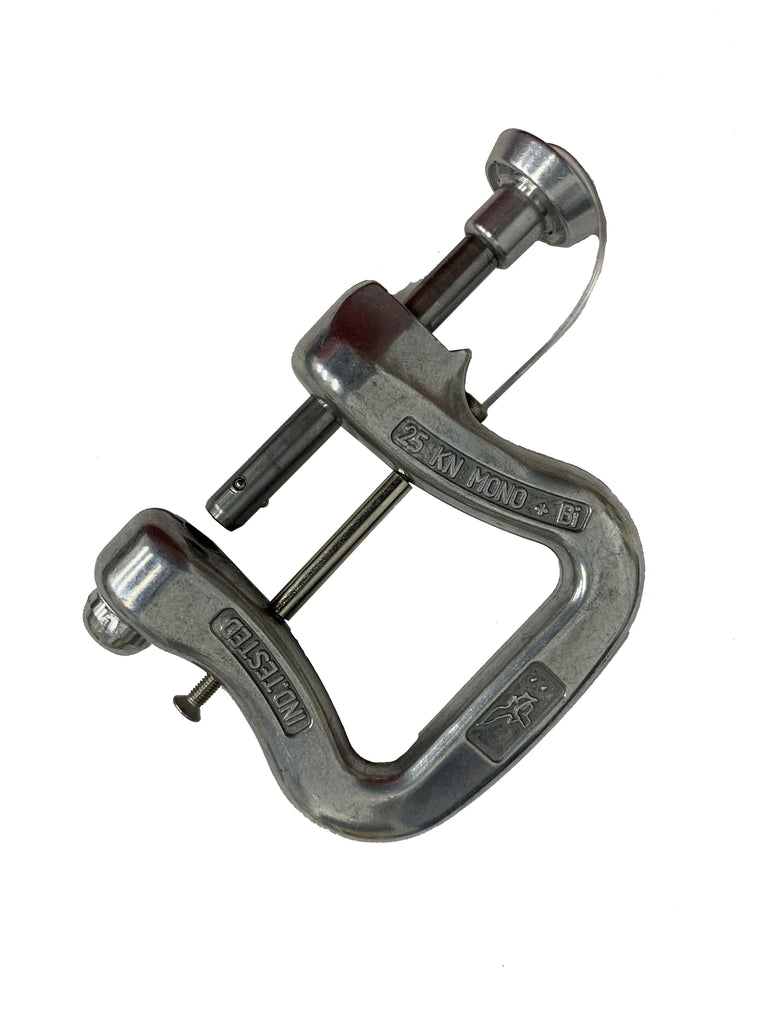PinLock Carabiner (sold individually)
$48.00
Product Details
Pin Lock
Features:
* 1 daN (decanewton) = 10 N (newton) ≈ 1 kg |
-
8 years replacement interval for paragliding solo use and 5 years replacement interval for paragliding tandem use with unlimited flight hours.
For the Pin Lock carabiner, fatigue strength is not an issue, as its closure is form-fit. In the test, the Pin Lock withstood 5 000 000 load cycles with an upper load of 425 DaN without damage.
-
Lightweight and safe:
Pin Lock carabiners are drop-forged instead of bent which results in increased material strength. The material of bent carabiners, in contrast, is weakened by inner tensions in the bended areas. However, the Pin Lock weighs a mere 80 g, i.e. only approx. half the weight of a steel carabiner. -
Separate strap chambers
Separate strap chambers prevent the carabiner from twisting.
-
Handling:
The risers are attached to the Pin Lock in a similar way as to conventional carabiners. The Quickpin lock features an automatic locking mechanism. It is designed in such a way that two different hand movements are required to unlock the carabiner: Pushing the release button and pulling out the bolt in the opposite direction.
Releasing the risers after landing is easier with Pin Locks than with snap hook carabiners. To ensure the proper connection between risers and carabiners in extremely strong wind conditions, the glider has to be attached to the carabiners before putting on the harness. This applies to both conventional carabiners and Pin Lock carabiners.
When used according to the instruction manual, icing problems can be reliably prevented even in extreme winter conditions.

![[Product_title] - Super Fly Paragliding](http://superflyinc.com/cdn/shop/products/Pin_Biner_grande.jpg?v=1581634209)
![[Product_title] - Super Fly Paragliding](http://superflyinc.com/cdn/shop/products/IMG_3453_grande.jpg?v=1581634209)
![[Product_title] - Super Fly Paragliding](http://superflyinc.com/cdn/shop/products/IMG_1703_grande.jpg?v=1581634210)
![[Product_title] - Super Fly Paragliding](http://superflyinc.com/cdn/shop/products/Small_Riser_Extension_grande.jpg?v=1581634211)

![[Product_title] - Super Fly Paragliding](http://superflyinc.com/cdn/shop/products/Pin_Biner_compact.jpg?v=1581634209)
![[Product_title] - Super Fly Paragliding](http://superflyinc.com/cdn/shop/products/IMG_3453_compact.jpg?v=1581634209)
![[Product_title] - Super Fly Paragliding](http://superflyinc.com/cdn/shop/products/IMG_1703_compact.jpg?v=1581634210)
![[Product_title] - Super Fly Paragliding](http://superflyinc.com/cdn/shop/products/Small_Riser_Extension_compact.jpg?v=1581634211)
Connect